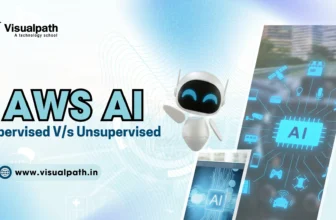
Machine Learning (ML) is transforming industries by enabling computers to learn from data and make predictions without being explicitly programmed. If you are a beginner stepping into this field, Python is the best starting point, and one of the most powerful libraries you can use is Scikit-learn.
In this guide, we’ll explore how Scikit-learn simplifies ML workflows, its key features, and walk through a hands-on example.
🌟 Why Python for Machine Learning?
Python is the top choice for ML because:
- Ease of learning – Its simple syntax lowers the learning curve.
- Rich ecosystem – Libraries like NumPy, Pandas, and Matplotlib integrate seamlessly.
- Community support – Extensive tutorials, forums, and open-source contributions.Python Training in Bangalore
- Versatility – Supports everything from data cleaning to advanced deep learning.
- 🔍 What is Scikit-learn?
Scikit-learn (sklearn) is a Python library that provides simple and efficient tools for:
- Classification (e.g., spam detection)
- Regression (e.g., predicting house prices)
- Clustering (e.g., customer segmentation)
- Dimensionality reduction (e.g., PCA for simplifying datasets)
- Model selection & evaluation
Its consistent API, detailed documentation, and ease of use make it one of the most beginner-friendly ML libraries.
🚀 Getting Started
1. Install Scikit-learn
Make sure you have Python installed, then run:
- Importing Required Libraries Best Python Training in Bangalore
📊 Example: Predicting House Prices with Linear Regression
Imagine we want to predict house prices based on the size of the house.
Step 1: Create a Sample Dataset
Step 2: Split Data into Training & Testing
Step 3: Train the Model
Step 4: Make Predictions
Step 5: Evaluate Performance
This simple model learns the relationship between house size and price, then predicts outcomes for new data.
🛠️ Other Algorithms in Scikit-learn
Scikit-learn supports a wide range of ML algorithms:
- Classification: Logistic Regression, Decision Trees, Random Forests, Support Vector Machines
- Regression: Linear Regression, Ridge, Lasso
- Clustering: K-means, DBSCAN
- Dimensionality Reduction: PCA, t-SNE
Each algorithm follows the same fit → predict → evaluate workflow, making it easy to switch between them.
📈 Next Steps for Beginners
- Practice with real datasets – Use Scikit-learn’s built-in datasets like Iris or Digits.
- Experiment with models – Try classification, clustering, and regression tasks.
- Learn evaluation metrics – Accuracy, precision, recall, F1-score, and confusion matrix.
- Explore pipelines – Automate workflows for preprocessing and model training.
Conclusion
In 2025,Python will be more important than ever for advancing careers across many different industries. As we’ve seen, there are several exciting career paths you can take with Python , each providing unique ways to work with data and drive impactful decisions., At Nearlearn is the Top Python Training in Bangalore we understand the power of data and are dedicated to providing top-notch training solutions that empower professionals to harness this power effectively. One of the most transformative tools we train individuals on is Python.







